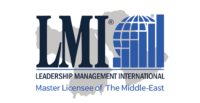 ORGANIZATIONAL NEEDS INVENTORY (ONI)
ORGANIZATIONAL NEEDS INVENTORY (ONI)
The Organizational Needs Inventory (ONI) is a method for organizational leaders obtaining a basis for understanding:
- How members describe their organization’s structure and their views about what an ideal organization would be.
- How members describe the predominant leadership style employed in their organization and their views about what the ideal leadership style would be.
- How members describe their organizational culture and their views about what the ideal organizational culture would be.
- Areas of incompatibility among the present organizational structure, predominant leadership style, and organizational culture.
- What changes in attitudes and leadership styles would be beneficial in helping the organization achieve its goals.
The ONI is for organizations whose leaders want to build a better environment for attracting and retaining better associates, thereby achieving better operating results. Recognizing that dramatic changes are taking place in the way organizations are designed and managed is the first step. Learning how things actually are and what they can be is next. Then comes a plan for the future, based upon a clear sense of direction and purpose. Finally, a plan of action is implemented to begin moving toward the desired future. The ONI instrument was designed to facilitate this process.
The ONI consists of a 126-item survey in which participants describe conditions as they exist at present (“actual”) and as they would exist under ideal circumstances. In most instances, an LMI Distributor administers the survey so as to ensure its reliability and the autonomy of participants. Responses are confidentially processed by LMI, and a comprehensive report is prepared which pinpoints areas of concern.
Factors and sub-factors of the ONI include:

The ONI Report consists of an Executive Summary, Factor Scores, and Item Scores.
Executive Summary – Contains the major finding of the organization as perceived by the members of the organization. The first page of this report is a summary of an organization’s Actual and Ideal scores. Each score is measured on a 0 to 10 scale. A score on this scale is a point along a line between two extremes. The factor score is an average of its subfactor scores and the gap score is the difference between the Actual and Ideal scores. The subfactor scores are the average of specific items statements. Each item statement is assigned a weighted value.
Factor Scores – Focuses attention on scores for the specific group factors such as Years with the company, Gender, Age, and Position within the company, and includes suggestions to management a basis for action.
Item Scores – Focuses attention on specific, concrete beliefs, perceptions, and practices. The item statements are presented in two groups. The first consists of item statements that characterizes organizations that have Bureaucratic Structures, Directive Leadership , and Competitive Cultures. The second consists of item statements that characterize organizations that have Versatile Structures, Participative Leadership, and Supportive Cultures.
Generally, an investment of $5,000-$50,000 is required for an Organizational Needs Inventory depending on the number of participants and locations involved. This fee includes administration, processing, preparation of a report, and a professional analysis and presentation to the organization’s leadership group.
